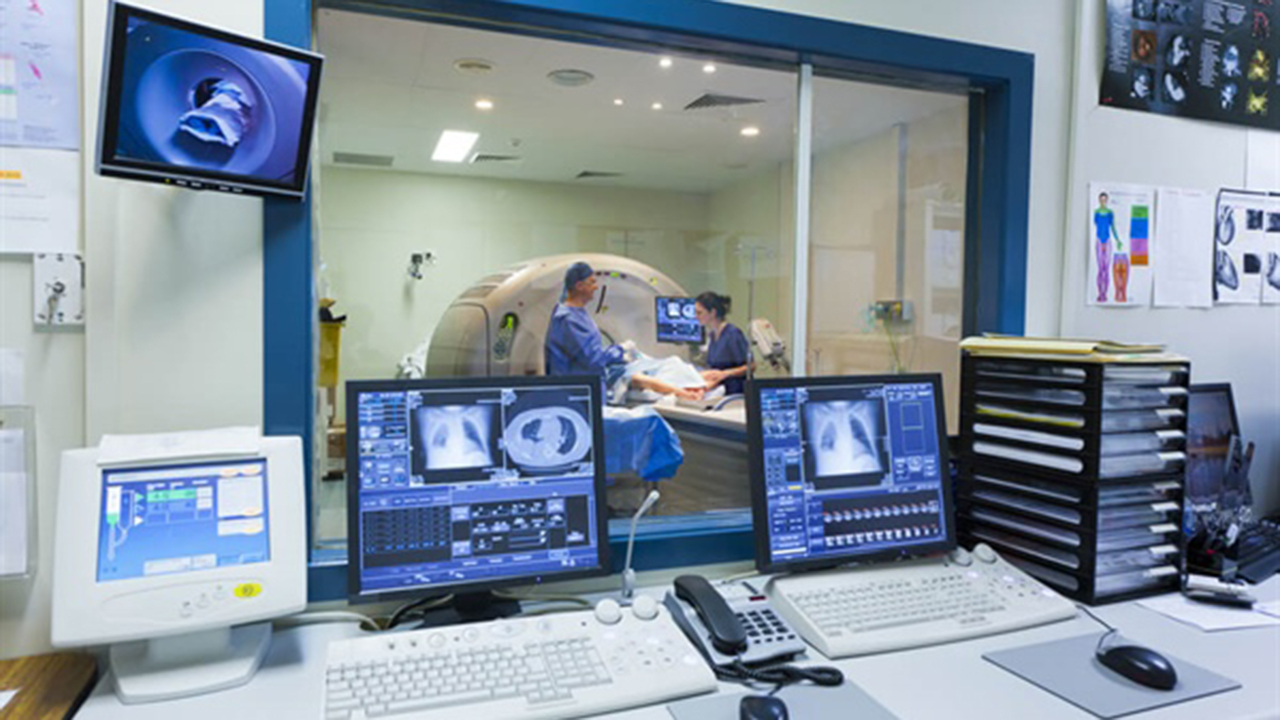A new checklist – recently developed in Saskatchewan – is supporting physicians when they make lumbar spine MRI requests, ensuring that this medical imaging test is ordered for the patients who need it.
It’s a quality improvement initiative supported by the province’s Appropriateness of Care program and the Health Quality Council (HQC), focused on the appropriate use of magnetic resonance imaging (MRI)* requisitions for low back pain. The group was interested in understanding the extent to which lumbar spine MRIs were ordered appropriately here in Saskatchewan. Appropriateness of care is defined by the Canadian Medical Association as ‘the right care, provided by the right provider, to the right patient, in the right place, at the right time, resulting in optimal care.’
While many people with back problems hope an MRI will provide answers about their condition, research conducted elsewhere in North American has found this medical imaging test is an overused tool in management of sore backs. Imaging for uncomplicated low back pain is only recommended for patients after at least six weeks of conservative management, and if symptoms are severe enough that surgery is being considered.
Generally a high level of appropriateness ensures that patients and providers have all the facts at their command to make decisions that could have significant implications for both the patient and the health system. In addition, appropriateness of care connects directly to HQC’s vision of ‘the highest quality of health care for everyone, every time.’
“At the centre of our work on this initiative was understanding why patients in our province are referred for lumbar spine MRIs. We could then assess how many of these MRI requisitions are considered appropriate,” says HQC Researcher Dallas New. “This project served to trial our Appropriateness of Care framework, which is an approach for supporting Saskatchewan’s health system to improve appropriateness.”
A clinical development team (consisting of patient representatives and physicians from across the province, and supported by the Ministry of Health and HQC) came together to develop a tool that could be used to support lumbar spine MRI requisitions for low back pain.
The MRI of lumbar spine checklist – based on literature, best practice guidelines from other jurisdictions, and expert consensus – provides a decision-support tool for referring physicians. Implementation of the checklist took place from October 2015 through January 2016 in both Saskatoon Health Region and Regina Qu’Appelle Health Region.
“Our main finding was that inappropriate lumbar spine MRIs are not a major issue in our province, and by all accounts that’s good news,” says Dallas. “A bonus is that we are now working towards the MRI of lumbar spine checklist being mandatory during the requisition intake process in Saskatchewan.”
In fact, chart audits from 2014 found that 45% of requisitions did not contain enough information to assess the appropriateness of the MRI. A year later, now that the MRI of lumbar spine checklist has been implemented, 100% of requisitions have all the information needed to make this assessment.
Additional steps the project team took to support the physicians in the uptake of the tool included: i) meeting with the province’s top referring physicians in person, ii) working directly with medical imaging departments in Saskatoon and Regina to integrate the checklist into the requisition intake process, iii) ensuring all lumbar spine MRI requisitions included detailed patient information in order to evaluate appropriateness.
HQC and Ministry of Health team members were staffed on site at the Saskatoon and Regina medical imaging departments to enter and analyze data, and to problem solve in real time.
Providing a physician’s perspective into the research was Dr. Paul Babyn, Department Head of Medical Imaging for the University of Saskatchewan and the Saskatoon Health Region. He says: “By ensuring appropriateness we can screen off those low-value studies where patients would not benefit from MRI, allowing us to provide sooner access to those truly needing MRI and subsequent care.”
Dr. Kunal Goyal, Department Head of Medical Imaging for the Regina Health Region, says: “It’s time we really focus on appropriateness as a key health care priority. It will allow us to offer the right test as the first test for all our patients. Appropriateness in imaging is crucial in tackling some of our waitlist issues and protecting patients from unnecessary tests/scans.”
And, what are the next steps in this quality improvement initiative? Firstly, further interest in the appropriateness of lumbar spine imaging across the whole patient journey continuum, especially understanding patient outcomes. Secondly, additional exploration of the appropriateness of other medical imaging, such as CT scans.
* Magnetic resonance imaging (MRI) uses magnetic fields and radio frequencies to create a three-dimensional picture of structures inside the body. An MRI can diagnose diseases of the brain, spine, skeleton, abdomen, and pelvis. An MRI image is more detailed than an X-ray, ultrasound, or CT scan.



